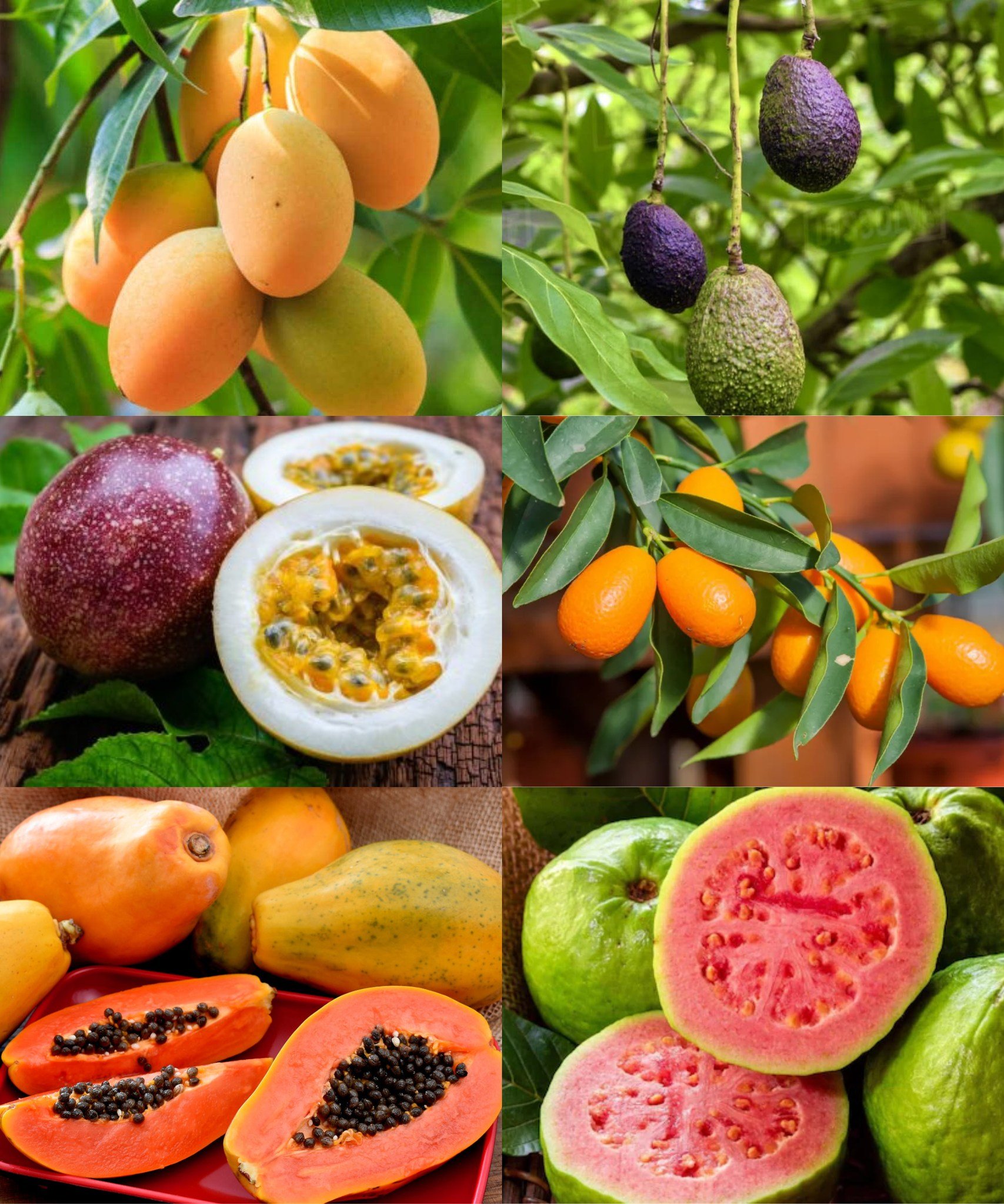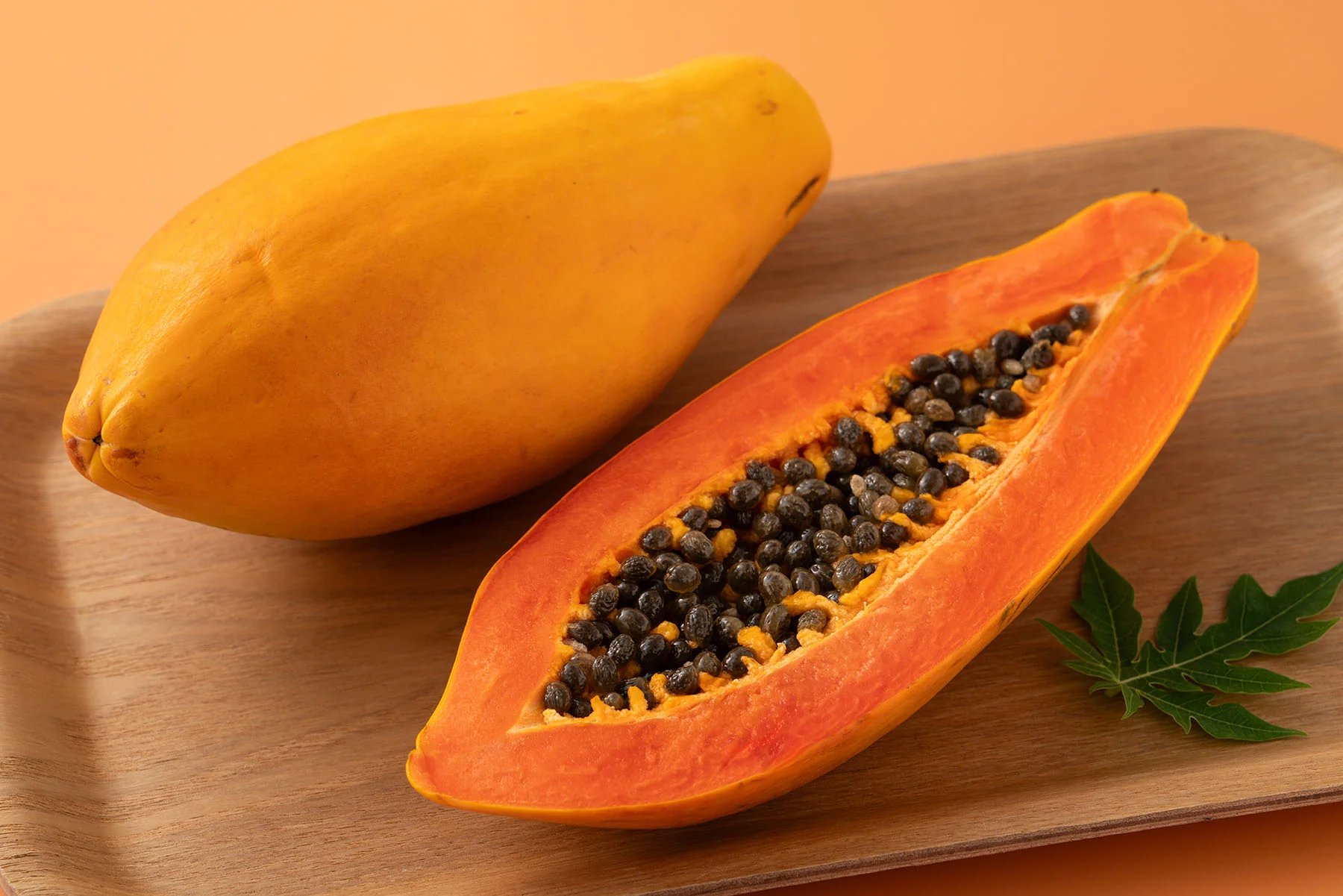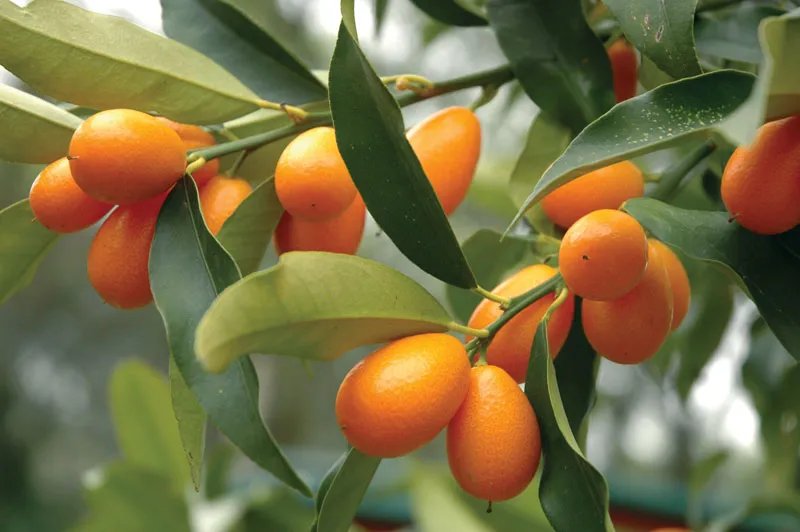If you’ve ever wanted to transform your garden into a tropical oasis filled with exotic fruits, you’re in the right place. Subtropical fruit trees can thrive in many home gardens, offering a wide range of flavors, textures, and health benefits. Whether you’re in a warmer climate or looking for ways to grow these fruits indoors or in containers, you can grow some of the best subtropical fruits that will not only beautify your garden but also provide delicious, fresh produce.
In this article, we’ll explore 8 exotic subtropical fruits that are easy to grow at home, why they are worth the effort, and some tips to help you succeed. From the creamy texture of avocados to the vibrant taste of dragon fruit, these fruits will make your garden a year-round source of culinary joy. So, let’s dive into the world of subtropical gardening
### 1. Mango (Mangifera indica)

#### Why Grow Mango Trees at Home?
Mangoes are the quintessential tropical fruit, known for their juicy, sweet flesh and intoxicating fragrance. Growing mango trees at home allows you to harvest your own fresh fruit, which is not only satisfying but also cost-effective, especially when you compare the price of mangoes in grocery stores. Mango trees are relatively easy to grow in subtropical regions and can be incredibly rewarding with the right care.
#### Growing Tips:
– **Planting Location:** Mango trees thrive in full sun, so make sure to choose a sunny spot in your garden with well-draining soil. They are sensitive to frost, so if you live in an area with cold winters, consider planting them in a container or moving them indoors during the colder months.
– **Watering Needs:** Mangoes are drought-tolerant once established but need regular watering during the growing season. Avoid overwatering, as mango trees prefer to dry out between waterings.
– **Fruiting:** Mango trees typically start bearing fruit after 3-4 years if grown from a grafted tree. Be patient, as the reward is well worth it
### 2. Avocado (Persea americana)
#### Why Grow Avocados at Home?
Avocados are a versatile and nutrient-dense fruit, known for their creamy texture and heart-healthy fats. Whether you use them for salads, guacamole, or spreads, avocados are a must-have in the kitchen. Growing them at home gives you access to fresh, organic avocados without the hassle of store prices.
#### Growing Tips:
– **Planting Location:** Avocados need a warm, sheltered environment to grow. Ensure that the location has good drainage, as avocado trees are prone to root rot if the soil is too soggy.
– **Watering Needs:** Water deeply but infrequently. Avocados prefer deep watering rather than frequent shallow watering, and they do not tolerate standing water.
– **Fruiting:** Avocados can take anywhere from 3 to 4 years to fruit when grown from a seed, and around 2-3 years if you plant a grafted variety. It’s worth noting that some varieties may need a pollination partner to produce fruit.
### 3. Papaya (Carica papaya)

#### Why Grow Papayas at Home?
Papayas are a fast-growing, tropical fruit that thrives in warm climates. Known for their vibrant orange color and sweet, tropical flavor, papayas are rich in vitamins A and C and digestive enzymes like papain. A papaya tree can grow quickly, producing fruit in as little as 6-12 months.
#### Growing Tips:
– **Planting Location:** Papayas need full sunlight and a warm environment to thrive. Ensure the location is sheltered from strong winds, as the trees have fragile trunks.
– **Watering Needs:** Keep the soil consistently moist but not soggy. Papayas grow best in well-draining soil that allows water to move freely.
– **Fruiting:** Papayas usually begin to fruit within 6-12 months. However, they are short-lived and may need to be replaced every 3-4 years to maintain a consistent harvest.
### 4. Guava (Psidium guajava)
#### Why Grow Guava Trees at Home?
Guava trees are incredibly rewarding, offering fragrant fruits with a sweet, tangy taste that can be eaten fresh, used in beverages, or made into jams. Guavas are also packed with vitamin C and fiber, making them a nutritious addition to your garden. Plus, guava trees are relatively hardy and can grow in a variety of soil types.
#### Growing Tips:
– **Planting Location:** Guava trees prefer full sun but can tolerate partial shade. They need well-drained soil for optimal growth.
– **Watering Needs:** While guava trees are drought-tolerant once established, they need regular watering during the fruiting season. Ensure the soil is well-drained to avoid root rot.
– **Fruiting:** Guavas usually start bearing fruit within 3-4 years of planting. Regular pruning helps shape the tree and encourages higher fruit production.
### 5. Lychee (Litchi chinensis)

#### Why Grow Lychee Trees at Home?
Lychees are small, round fruits with a translucent, juicy flesh and a floral, sweet flavor. They are commonly found in tropical and subtropical regions and are prized for their exotic taste. Growing lychees at home can be a rewarding experience, especially if you live in a region with a mild winter.
#### Growing Tips:
– **Planting Location:** Lychee trees require full sunlight and well-draining soil. They also prefer a humid climate, making them an excellent choice for coastal gardens or areas with consistent rainfall.
– **Watering Needs:** Water regularly to keep the soil consistently moist but not waterlogged. Lychee trees do not tolerate drought well.
– **Fruiting:** Lychees can take 5-6 years to fruit when grown from seed, but grafted trees may bear fruit in as little as 3 years.
### 6. Dragon Fruit (Hylocereus spp.)
#### Why Grow Dragon Fruit at Home?
Dragon fruit is an eye-catching, vibrant fruit that’s as fun to grow as it is to eat. This cactus-like plant produces bright, colorful fruit with a mildly sweet flavor and a unique appearance. Dragon fruit is also packed with antioxidants and vitamins. Growing it at home can be a fascinating project, especially since it thrives on very little care once established.
#### Growing Tips:
– **Planting Location:** Dragon fruit plants are climbers, so they need a strong structure to support their growth. Plant them in well-draining soil and provide plenty of sunlight.
– **Watering Needs:** Dragon fruit is drought-tolerant once established. Water when the soil is dry, but avoid overwatering.
– **Fruiting:** Dragon fruit plants may take 1-2 years to bear fruit if grown from cuttings. The colorful fruit is typically harvested during the summer months.
### 7. Passion Fruit (Passiflora edulis)
#### Why Grow Passion Fruit at Home?
Passion fruit vines are known for their unique, aromatic fruit and stunning flowers. The tangy-sweet flavor of passion fruit makes it a favorite in juices, cocktails, and desserts. The vines are also relatively easy to grow and provide fast results in terms of fruit production.
#### Growing Tips:
– **Planting Location:** Passion fruit vines require full sunlight and a trellis or support structure to climb. The vines are hardy and thrive in subtropical climates.
– **Watering Needs:** Water regularly, especially during the fruiting season, to maintain healthy growth.
– **Fruiting:** Passion fruit vines can begin bearing fruit within 12-18 months of planting. They are prolific producers, offering several harvests each year.
### 8. Kumquat (Fortunella spp.)

#### Why Grow Kumquats at Home?
Kumquats are small, tangy fruits that are often eaten whole. They have a unique flavor profile that combines a sweet peel with a tart interior. Kumquats are an excellent addition to any garden, particularly for those looking to grow citrus fruits in a subtropical climate.
#### Growing Tips:
– **Planting Location:** Kumquats thrive in sunny spots with well-draining soil. They can be grown in containers, making them perfect for small spaces or patios.
– **Watering Needs:** Keep the soil moist but not soggy. Kumquats are relatively low-maintenance once established.
– **Fruiting:** Kumquat trees typically begin to bear fruit after 2-3 years. They are also cold-hardy, making them a great choice for gardeners in temperate zones.
### Conclusion
Growing subtropical fruits at home is not only an enjoyable and rewarding hobby but also an opportunity to enjoy fresh, nutritious, and exotic produce right from your garden. From the creamy texture of avocados to the tropical aroma of mangoes, these fruits offer a unique combination of flavors, health benefits, and culinary possibilities. Whether you have a sprawling garden or just a small patio, these 8 fruits can thrive in a variety of conditions and bring a touch of the tropics to your home.
Start small, follow the growing tips, and before you know it, you’ll be harvesting your own exotic fruits. Happy gardening
